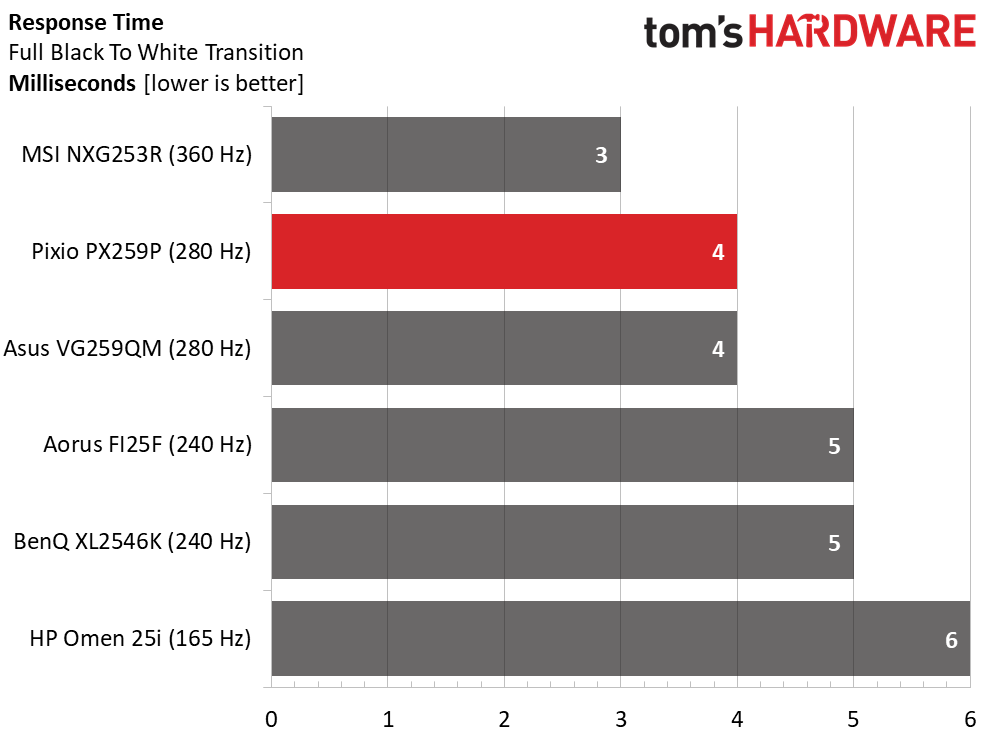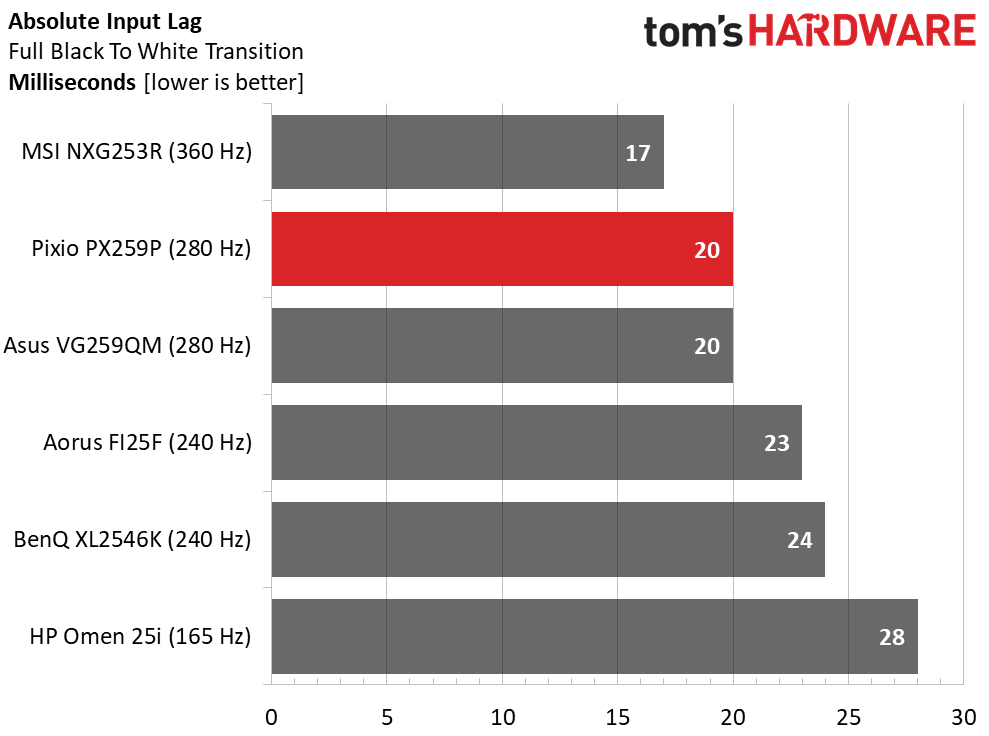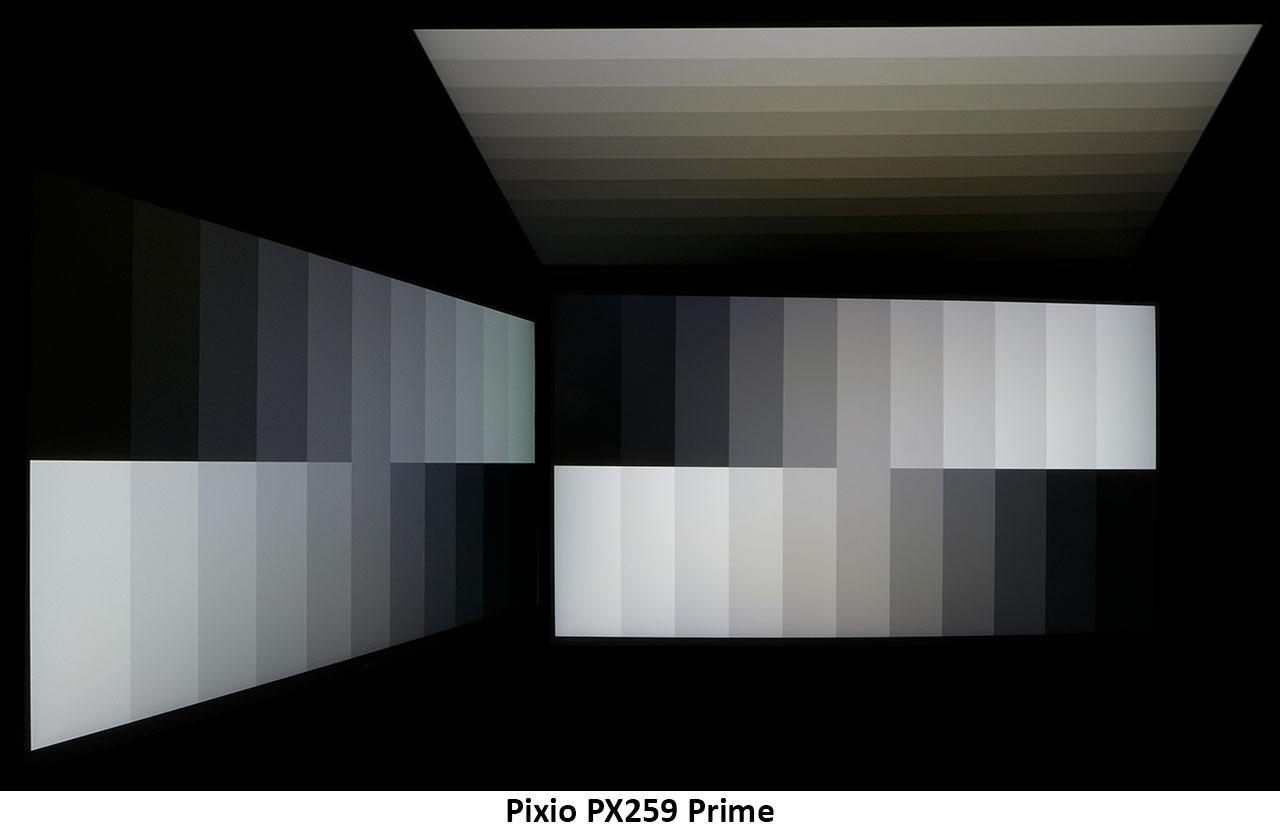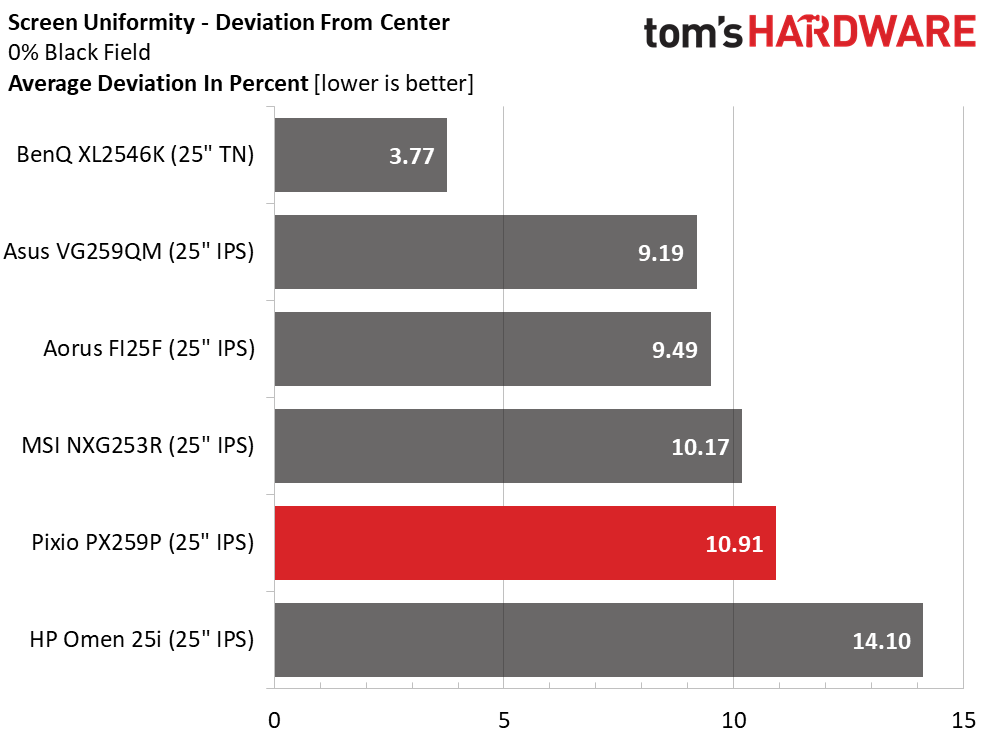Why you can trust Tom's Hardware
We’ve rounded up a group of fast 25-inch monitors to compare the PX259 Prime’s performance. At the top of the price range is MSI’s Oculux NXG253R, which runs at 360 Hz. At the Pixio’s 280 Hz level is Asus’ TUF VG259QM. At 240 Hz are the Aorus FI25F and BenQ Zowie XL2546K. 165 Hz is represented by HP’s Omen 25i. All monitors are FHD resolution, and only the HP supports DCI-P3 color; the rest use the smaller sRGB color space.
Pixel Response and Input Lag
Click here to read up on our pixel response and input lag testing procedures.


The PX259 Prime’s best attribute is its speed and response. It draws a full screen pattern in 4ms like other 280 Hz monitors and equals the total lag time as well. As you can see, it’s only 3ms slower than the 360 Hz MSI, which costs twice as much. Are 3ms worth $300 more? That’s the question buyers should ask themselves. In practice, this kind of speed means incredibly smooth action with no reduction in resolution as things get more intense. Monitors this fast will make you a better player, especially in first-person shooters.
Viewing Angles
The PX259 Prime delivers good IPS viewing angles where brightness decreases by about 20% to the sides and the color shifts to green/blue. Detail remains visible in all areas of the image with good highlight and shadow detail. From the top, it looks more washed out and the color shifts to green. Brightness drops by around 50%. If you share the PX259 Prime with another person, you’ll both see a bright and colorful picture.
Screen Uniformity
To learn how we measure screen uniformity, click here.
At this price, we’re satisfied with the PX259 Prime’s screen uniformity. A 10.91% score is good at this price point. Our meter measured a hotspot in the upper left corner, which we could barely see in the test pattern but not in actual content. There were no bleed or glow artifacts.
Get Tom's Hardware's best news and in-depth reviews, straight to your inbox.
Current page: Response, Input Lag, Viewing Angles and Uniformity
Prev Page Features and Specifications Next Page Brightness and Contrast
Christian Eberle is a Contributing Editor for Tom's Hardware US. He's a veteran reviewer of A/V equipment, specializing in monitors. Christian began his obsession with tech when he built his first PC in 1991, a 286 running DOS 3.0 at a blazing 12MHz. In 2006, he undertook training from the Imaging Science Foundation in video calibration and testing and thus started a passion for precise imaging that persists to this day. He is also a professional musician with a degree from the New England Conservatory as a classical bassoonist which he used to good effect as a performer with the West Point Army Band from 1987 to 2013. He enjoys watching movies and listening to high-end audio in his custom-built home theater and can be seen riding trails near his home on a race-ready ICE VTX recumbent trike. Christian enjoys the endless summer in Florida where he lives with his wife and Chihuahua and plays with orchestras around the state.

